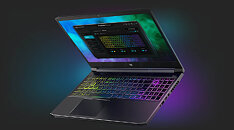
ASUS ROG Astral RTX 5080 OC BIOS Update Increases Max. TGP to 450 W - Originally 400 W
TechPowerUp's W1zzard did not honor the ASUS ROG Astral RTX 5080 OC Edition graphics card model with any awards—as disclosed in his late January evaluation, a major negative point was highlighted: "no additional power limit increases allowed." The premium-tier ASUS offering managed to top TPU's "Maximum Overclock Comparison" GeForce RTX 5080-class table; comfortably leading the pack with an out-of-the-box (default) 400 W power setting. Reviewers and well-heeled owners—of this $1500+ special quad-fan package—have lamented the apparent lack of extra headroom. Sitting in fifth place was GIGABYTE's RTX 5080 GAMING OC SKU; a card that can support up to 450 W. As reported by VideoCardz earlier today, ASUS has taken onboard aforementioned feedback.
Resultant under-the-hood tinkerings were implemented mid-way through last month. The "ROG Astral GeForce RTX 5080 16 GB GDDR7 OC Edition" support page has welcomed a new downloadable file—authored on March 14—this BIOS update is advertised as being capable of: "increasing the (model's) maximum TGP to 450 W." Additional bragging rights will be granted with this patch; owners can boast about their expensive bits of kit being further enhanced—NVIDIA's reference specification TGP/TDP is 360 W. Thumbs up go to Team ASUS once again—mid-February Astral series updates tweaked noise profiles; not too long after an absorption of launch day criticism.
Resultant under-the-hood tinkerings were implemented mid-way through last month. The "ROG Astral GeForce RTX 5080 16 GB GDDR7 OC Edition" support page has welcomed a new downloadable file—authored on March 14—this BIOS update is advertised as being capable of: "increasing the (model's) maximum TGP to 450 W." Additional bragging rights will be granted with this patch; owners can boast about their expensive bits of kit being further enhanced—NVIDIA's reference specification TGP/TDP is 360 W. Thumbs up go to Team ASUS once again—mid-February Astral series updates tweaked noise profiles; not too long after an absorption of launch day criticism.















































